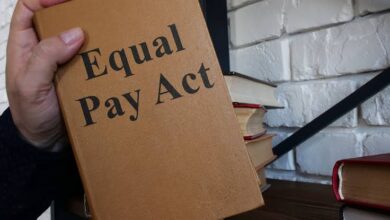The Loss of Enjoyment of Life: Eligibility, Examples, and More

Life is full of experiences that bring us joy, fulfillment, and satisfaction. From small pleasures like the enjoyment of a sunset to more elaborate tasks like engaging in one’s favorite hobby, such activities shape our quality of life. What if an accident or injury suddenly takes away the ability to enjoy those experiences? That is what is meant by “loss of enjoyment of life.”
The emotional effects of an accident or injury can be far-reaching and long-lasting. There is a huge sense of loss when we cannot do the things that make us happy, and our quality of life is reduced.
Although accident victims cannot go back in time, what they can do is bring the at-fault party under the strong arm of the law. They can do this by seeking the assistance of the top law firms, like The Bruning Law Firm, who will work hard to win fair compensation.
What is the Loss of Enjoyment of Life?
Loss of enjoyment of life is a reduced or total loss of ability to participate in or enjoy any activities that the victim could do before or that were important or pleasurable to them. This factor is common in personal injury claims.
More than the physical pain and suffering, the loss of enjoyment of life deals with the emotional and psychological effects of an accident or injury.
Eligibility for Loss of Enjoyment of Life Claims
Not all injuries or accidents give rise to a claim for loss of enjoyment of life. The following factors are usually considered in determining whether a person is entitled to such a claim:
- Seriousness of injury: The nature and seriousness of the injury must be such that participation in activities formerly enjoyed is affected.
- Permanent effects: The right kind of injury has to be long-term or permanent, not just a temporary condition.
- Clear causation: There must exist a close causal link between the incident and loss of enjoyment.
- Documented evidence: The condition must be documented through medical records, witness statements, or other relevant evidence.
Examples of Loss of Enjoyment of Life
Loss of enjoyment may appear in many ways for each person, based on who they are and how their life is. Some everyday examples are as follows:
- An athlete whose promising career is brought to a close through injury.
- The music lover who lost hearing and had to quit attending concerts or playing instruments.
- A professional cook who loses the sense of taste and smell as a result of an accident.
- An avid reader suffers a brain injury and cannot concentrate or understand what they’re reading.
- A socialite who suffers anxiety or PTSD after some event, lowering their interaction in social situations.
How Loss of Enjoyment is Calculated
Determining the value of a loss of enjoyment of life can be challenging, as it’s not easily quantifiable. Courts and insurance companies often consider:
- The nature and extent of activities the victim is unable to participate in
- The importance of such activities to the victim
- Age and life expectancy of the victim
- Likelihood of improvement over time
Expert testimony from a psychologist, a life care planner, and a doctor can assist in framing both the impact and value of the loss.

Proving Loss of Enjoyment of Life
To successfully claim loss of enjoyment, it’s crucial to provide strong evidence. This may include:
- Testimonies of the person and their family members
- Comparisons of conditions before and after the injury
- Medical documentation and expert testimony
- Comparisons of photographs or videos depicting activities prior to the change
- Daily life experiences maintained by journals
Conclusion
Loss of enjoyment of life is a serious consequence that affects the wellbeing and happiness of an individual. Though it is hard to calculate, it is an important factor in personal injury settlements.



